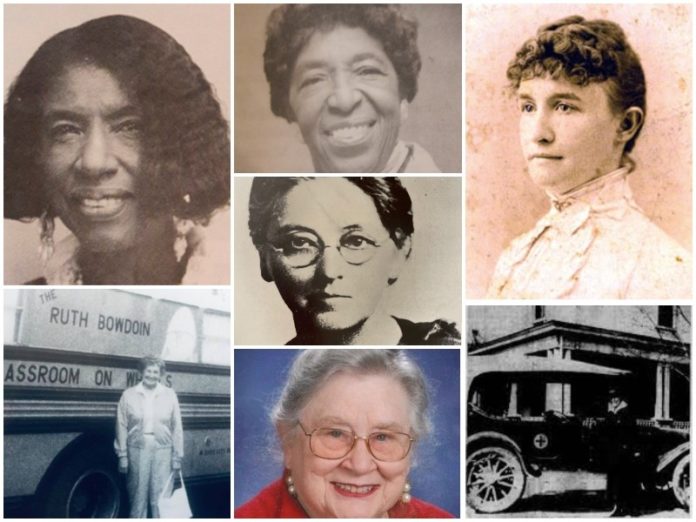
There are many notable women who have stepped out of what was once considered traditional female roles and worked hard to not only head down the path less taken but in the process blazed a trail for other women to follow. While creating a play about the Leading Ladies of Rutherford County, Rutherford Arts Alliance received names of hundreds of women who have made a difference for others and took strong leadership positions ahead of the curve. Here is a sampling of seven of the women who added to women’s history in the county.
Maude Ferguson
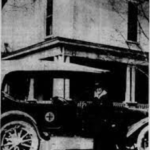
Maude Ferguson (1874-1958) was a public health nurse brought to Murfreesboro by the Red Cross. When she arrived in the county, she was the only nurse in the entire county. It was during the 1920s, and she was given an old car to drive and lived in an apartment in the Women’s Club. When she began her work, mother and infant death was high due to non-existent neo-natal care and ignorance, especially among African American families. Ferguson worked with Dr. Harry S. Mustard, then Rutherford County Health Officer, and the Commonwealth Fund of New York to establish a series of classes and other programming called “demonstrations” to teach hygiene and personal care to the women in the county. This eventually led to the building of the Rutherford Health Department, the first of its kind in any rural county in the United States, and Rutherford Hospital. She fully embraced the ideas of a public health nurse by “entering the profession with zeal and enthusiasm, with high ideas, and a desire for knowledge which would help render a real service to the sick and helpless,” according to Supervision in Public Health Nursing.
Ruth Bowdoin
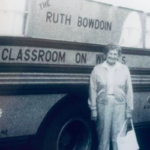
Ruth Bowdoin (1917-2010) always a teacher, in 1950 Bowdoin was a supervisor at Murfreesboro Public Schools when she was diagnosed with incurable cancer and given six months to live. She went to New York’s Sloan Kettering Memorial Hospital looking for treatment options when Dr. Norman Vincent Peale came visiting. They talked and prayed together, and when he left she reflected on a question he had asked her, “What did she intend to do with her life after treatment?” She asked God what she could do to further his work on earth and instead of dying, six months later she was back teaching and developing what would become her legacy — Classroom on Wheels. Using an old beaten-up school bus that had been decommissioned, she used it to visit low-income and government housing areas to help at-risk pre-kindergarten and kindergarten-age children prepare for school. Her method for enriching the classroom experience for these children, called “The Bowdoin Method,” was the pre-curser to Head Start. She was honored by President Clinton in 1995 and inducted into the Tennessee Teacher’s Hall of Fame in 2007.
Jeanette Moore King
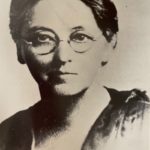 Jeanette Moore King (1870-1965) a true pioneer in Rutherford County education, she was the one and only female Director of Schools (then called Superintendent of Public Instruction) for the county. Many have not even heard of her, but in 1900 she was the first woman elected to a public office in the county, and the first female head of a school system in the state of Tennessee. She, as still many women today, was paid a fraction of her male predecessor but was determined not to let it deter her vision for educating children in the area. According to the book “Heart of Tennessee” by Terry Weeks, King was instrumental in getting a resolution passed at the state level requiring there be a high school in each county. She left the Superintendent position to take on becoming Director of Physical Training at Peabody College and then came on as one of the original faculty at Middle Tennessee Normal School (now Middle Tennessee State University). In the 1920s she once again served as the Superintendent. In 2018, Steve Cates wrote a letter to the “Murfreesboro Post” Editor calling for a school to be named after her.
Jeanette Moore King (1870-1965) a true pioneer in Rutherford County education, she was the one and only female Director of Schools (then called Superintendent of Public Instruction) for the county. Many have not even heard of her, but in 1900 she was the first woman elected to a public office in the county, and the first female head of a school system in the state of Tennessee. She, as still many women today, was paid a fraction of her male predecessor but was determined not to let it deter her vision for educating children in the area. According to the book “Heart of Tennessee” by Terry Weeks, King was instrumental in getting a resolution passed at the state level requiring there be a high school in each county. She left the Superintendent position to take on becoming Director of Physical Training at Peabody College and then came on as one of the original faculty at Middle Tennessee Normal School (now Middle Tennessee State University). In the 1920s she once again served as the Superintendent. In 2018, Steve Cates wrote a letter to the “Murfreesboro Post” Editor calling for a school to be named after her.
Mary Noailles Murfree
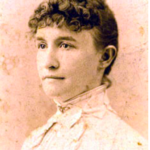
Mary Noailles Murfree (1850 -1922) originally wrote popular “local color” books about Appalachian life under the name Charles Egbert Craddock because she feared that no one would read something written by a woman. She was the great-granddaughter of Colonel Hardy Murfree, for whom the city of Murfreesboro is named. Her first two books, “In the Tennessee Mountains” and “Where the Battle Was Fought”, were about life in Tennessee. They were published in 1884, with her last book, “The Story of Duciehurst: A Tale of the Mississippi” being published in 1912. A sickly child, she fell in love with books and the world they created for her. With her father a successful Nashville lawyer, her family spent the long hot summers in the mountains at Beersheba Springs in the Cumberland Mountains. There Murfree became acquainted with the lives of rural folk living in the mountains and began writing stories about them for “Atlantic Monthly.” Her first book was a collection of these stories, and the second was a novel about Murfreesboro. Once her work caught on, she told her publishers that she was a woman and she was fully embraced for her talent versus her sex. Her writing desk and a collection of her papers and belongings was given to the Women’s Club in Murfreesboro, where they can be seen in their library. In her last years, her eyesight was failing her, and she stopped writing.
Myrtle Glanton Lord
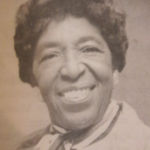
Myrtle Glanton Lord (1908 – 2007) was a bundle of energy that children and adults alike were drawn to. A graduate of Bradley Academy, Lord went on to receive a teaching degree, studying at Tennessee State University, Fisk University, George College, University of Michigan and Florida Agriculture and Mechanical College. She became a teacher, teaching for 42 years with stints at Little Hope in Smyrna, Bradley Academy, and Hobgood Elementary. She was demanding and determined to teach her charges not only facts and figures but about life and about how to learn. Having a strong drive to get children to read, she could be found in the library at Patterson Park, which is named after her, reading to young children weekly even after turning 100. She was a force behind saving Bradley Academy and turning it into a museum. She advocated for the building of the current Patterson Park. And she gave her time to many other organizations which she believed in, including Beasley Humane and Habitat for Humanities. She worked for Murfreesboro Parks and Recreation for 52 years. But her biggest contribution was to the education of young black children. As her nephew, Bobby Glanton Smith wrote on realmendontplay.com, “I’ve known elders, many of whom are now deceased, who spoke reverently of my aunt’s dedication to the profession of teaching. The American landscape is sprinkled with doctors, lawyers, professionals and craftsmen that received their educational foundation from Myrtle Glanton Lord.” She was given many honors in the final years, including being inducted into the Tennessee Teachers’ Hall of Fame, and named as Tennessee’s Most Outstanding African American Woman in 1999.
Nannie Rucker
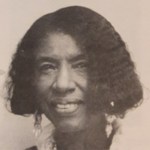
Nannie Rucker (1914 – 2004) was the first African American female elected to the Tennessee delegation to the Democratic National Convention in 1972. She was also a member of the Rutherford County Election Commission, served on the state Democratic Executive Committee, and served the Rutherford County School Board. Like Lord, she was a teacher. She taught in the one-room Emory School. The school became part of a Blue Ribbon Program to teach kids about hygiene. According to rutherfrodtnhistory.com, “Upon the recommendation of County School Superintendent Bealer Smotherman…, Nannie Rucker was chosen to appear before a committee in Washington on April 21, 1947.” She was one of the top educators from one-room county schools sent to endorse a bill which would offer up to $250,000 in Federal funds over three years to help improve educational facilities. She later taught at the Shiloh School, and was the first African American educator to teach at Homer Pittard Campus School. She is listed in Who’s Who in America Politics and Who’s Wo among African Americans.
Christine Huddleston
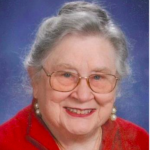
Christine Huddleston (1933 – 2016) was the first woman elected to the Rutherford County Commission. Huddleston was a powerhouse who worked for 40 years for the Murfreesboro Credit Bureau. A dedicated community servant, she organized Room in the Inn, which served the homeless, and headed it for more than 30 years. In all her positions, she worked hard to help give people that needed it a hand up, but not a hand out. She often joked that you liked her or you didn’t like her, but she had a huge heart for those in need. She had integrity and strength of character that inspired many. And to many, she was a role model and a mentor. She showed compassion, without enabling. As one of her former clients at Room in the Inn said upon her passing, “Mrs. Huddleston was a very kind and caring lady. My family and I stayed at Room in the Inn back in 2001, and she really went out of her way to help us get back on our feet. She will be missed dearly.” And another said, “I was introduced to Mrs. Huddleston when I was homeless. She took me in and helped me with my uniform when I got my job at Shoney’s. Such a sweet lady. She was an icon for this city. She was firm, but loved by all…”














